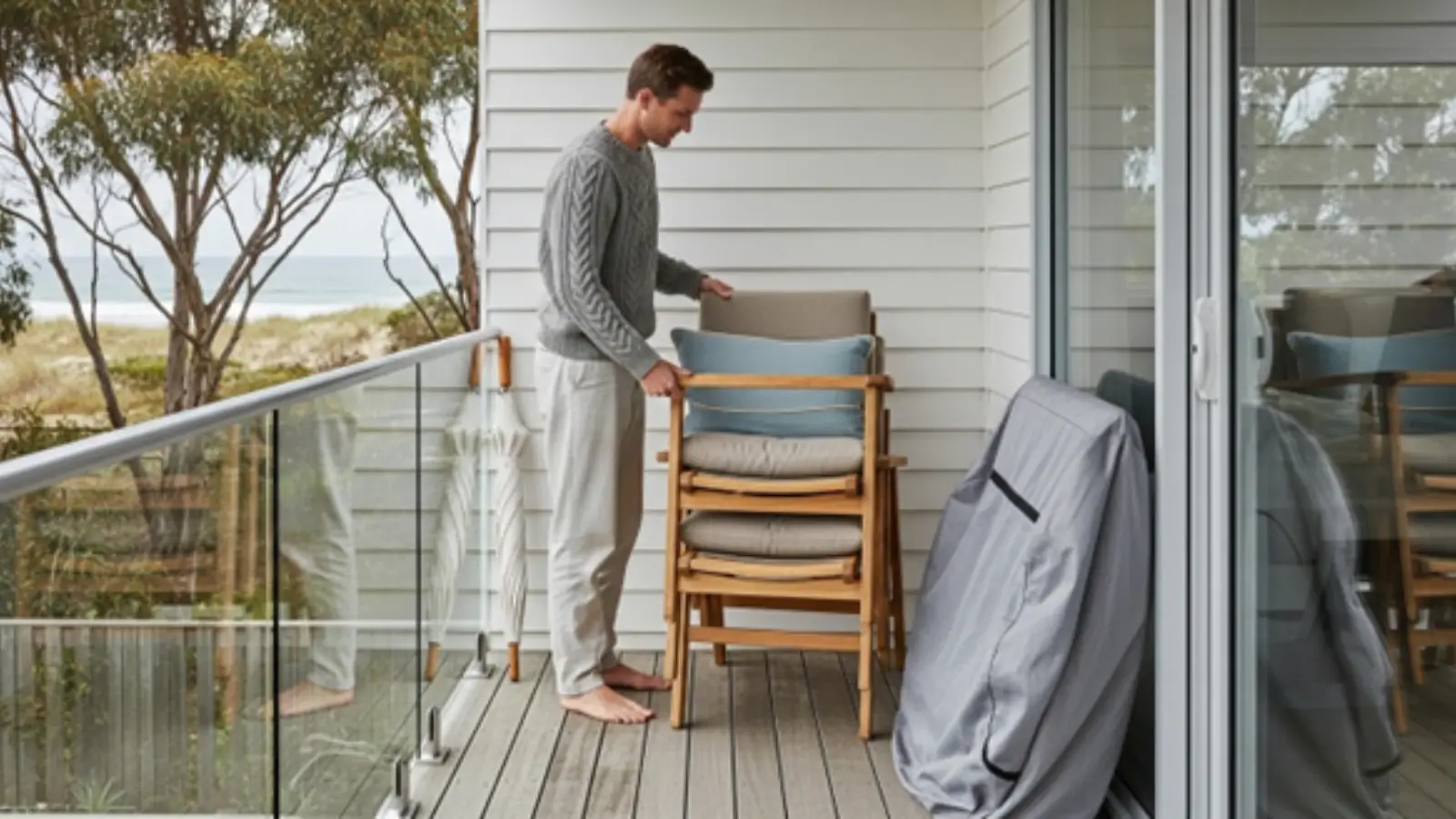


The weather is getting cold this winter, and your outdoor chairs need protection. Though they are made of high-quality materials, cold air, rain, and moisture can damage them if you don’t take care of your furniture.
To store outdoor chairs during winter:
In this guide, we will show you how to store outdoor chairs during winter the right way—so they stay clean, dry, and ready to use when the weather warms up.
If you are lazy enough to store your outdoor chairs during winter, you should know the consequences of it. Leaving chairs outside all winter is risky.
Cold and wet weather can cause wood to crack, metal to rust, and plastic to fade. Cushions may grow mould or mildew. That’s why you need to winterise outdoor chairs before the cold sets in.
Protecting your chairs is not just about looks. It’s about making sure they last for years. The right outdoor furniture winter protection helps you avoid damage and saves money in the long run.
To make sure your outdoor chairs last long after storing patio chairs in winter, follow the steps below to store them properly.
Before storing your outdoor chairs, you should clean them well. Because dirt, leaves, food leftovers, etc., can lead to mould and mildew growth, or attract bugs when they are stored for a long time in an enclosed environment.
Here’s what to do:
If you’re storing cushions in winter, make sure they’re completely dry. Store them in breathable bags, not plastic. This helps prevent moisture build-up.
For wood or metal furniture, use the right sealant before storing. A winter sealant for outdoor furniture adds a barrier against moisture, UV damage, and temperature changes. It helps prevent cracking, rust, and fading during the colder months.
These oils and sealants help prevent splitting, swelling, and mildew, especially in exposed areas.
Be sure to coat joints and screws where rust is most likely to form.
These simple steps can greatly extend the life of your outdoor chairs through winter.
If your chairs stack or fold, take advantage of that. Smart stacking and folding chair storage saves space and keeps things tidy.
Use quality waterproof outdoor chair covers to cover up your outdoor chairs. They should also be breathable to stop moisture from getting trapped.
Weather-resistant but breathable covers ensure your chairs will be protected against winds, storms, and moisture, and won’t let mould grow.
Now, it’s time to store your outdoor chairs. There are mainly two options you can use: indoor storage and outdoor storage.
Indoor storage of outdoor furniture is always best. A garage, shed, or even a dry basement will protect your chairs from rain, frost, and wind.
For high-end pieces, consider climate‑controlled storage furniture units to keep humidity out.
If you don’t have indoor space, that’s okay. You can still store chairs outside—just do it right. Choose a covered area like a patio, deck, or awning.
And always use winter covers for outdoor chairs.
No one wants to open their storage area and find mould. Use these tips to prevent mould on outdoor chairs:
Check your storage every few weeks. It’s a small task that can prevent big problems.
Taking the time to store outdoor chairs during winter is worth it. Clean them, seal them, and cover them well. Whether you're storing outside or in, a little effort now means fresh, clean furniture in spring.
Looking for long-lasting, weather-smart furniture? Or do you need hands-on consultation for storing your furniture during winter? Outdoor Furniture Brisbane offers you all these advantages. Their outdoor chairs are built for Aussie weather—using sealed materials, smart coatings, and easy-care designs. Whether you want foldable, stackable, or solid timber, they’ve got what your backyard needs—winter included.